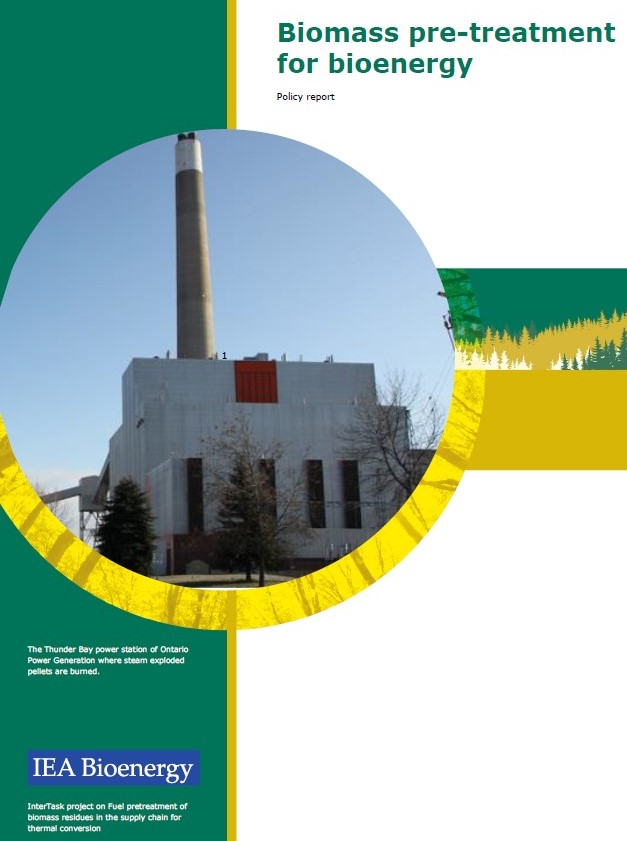Biomass pre-treatment for bioenergy
 IEA Bioenergy is pleased to announce the release of its upcoming report, Biomass Pretreatment for Bioenergy. This report summarises the efforts of an inter-task project designed to demonstrate how the application of certain biomass pre-treatment technologies could make existing bioenergy supply chains more fuel flexible, more efficient, and more cost-effective. By applying biomass pre-treatment activities such as washing, drying, sieving, leaching, or thermal pre-treatment to lower-grade biomass, industry will be able to expand its resource base and increase the flexibility of various conversion technologies. These pre-treatment options could have significant benefits for the biomass industry, including:
IEA Bioenergy is pleased to announce the release of its upcoming report, Biomass Pretreatment for Bioenergy. This report summarises the efforts of an inter-task project designed to demonstrate how the application of certain biomass pre-treatment technologies could make existing bioenergy supply chains more fuel flexible, more efficient, and more cost-effective. By applying biomass pre-treatment activities such as washing, drying, sieving, leaching, or thermal pre-treatment to lower-grade biomass, industry will be able to expand its resource base and increase the flexibility of various conversion technologies. These pre-treatment options could have significant benefits for the biomass industry, including:
- Enabling the use of lower-grade biomass for fuel conversion—broadening the supply of available biomass resources
- Producing fuels with greater volumetric energy density—reducing transportation costs and logistical challenges
- Converting biomass into fuels that are closer in characteristic to fossil fuels, which will reduce the need for power plants to build new infrastructure to use the fuels; these fuels will also have a lower impact on the plant’s overall performance.
This report will summarise the findings of five case studies that show the added value of biomass pre-treatment for certain resources and end user applications:
- Biomass torrefaction
- Moisture, physical property, ash, and density management as pre-treatment practices in Canadian forest biomass supply chains
- Pre-treatment of municipal solid waste (MSW) for gasification
- The steam explosion process technology
- Leaching as a biomass pre-treatment method for herbaceous biomass: sugar cane trash and palm oil mill residues
IEA Bioenergy hosted a webinar on this topic in conjunction with the Canadian Institute of Forestry recently. You can view a recording of this webinar here.
More information about this report is available on IEA Bioenergy’s website.
